Before we can get an appreciation of what constitutes stereo phonic sound we need to understand what sound waves themselves are. Sound waves travel in air because air is what the text books call "an elastic medium". This can be seen by using a common bicycle pump and pressing the handle in so that the piston or plunger moves down the barrel of the pump, holding one finger over the outlet so no air escapes (Fig. 9) . If the piston or plunger moves halfway down the barrel of the pump then the air, which originally occupied the whole barrel, is now compressed into just half the barrel. This can only happen because the air is compressible. As a result of this compression, the pressure of the air is just twice what it was before the plunger was pushed down.
How Sound Waves Form
This excess pressure can be felt on the finger holding the air in. The original air pressure could not be felt because it is the same as the air pressure all around us, called atmospheric air pressure (approximately 15 pounds on every square inch of every object in contact with the air) . Pushing the plunger halfway down the barrel of the pump increases the pressure inside to about 30 pounds on every square inch and the pressure you can feel on your finger is the excess 15 pounds per square inch on the inside as compared with the outside.
Sound waves do not compress the air to anything like the extent your bicycle pump docs, when you can feel the pressure change. In fact, an average sound wave only compresses the air by one millionth of its static pressure of around 15 pounds per square inch.
A loud sound will produce a compression many times this, while a soft sound, one just audible, will only produce a pressure very much less even than one millionth of the steady pressure.
The air has to be moved to be compressed. In the case of the bicycle pump the plunger has to be pushed in from one end to compress the air in the other end. So movement of some air, with out moving the air adjoining it, will create a change of pressure.
The opposite is also true. Difference in pressure creates air movement. If you release your finger, some air rushes out of the bicycle pump. These two facts combine to produce traveling sound waves.
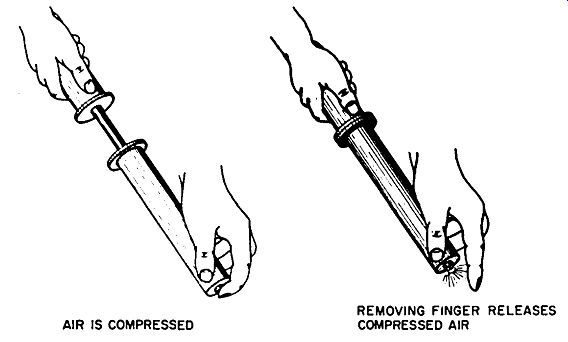
Fig. 9. A bicycle pump can demonstrate the properties of air that make
it transmit sound--compressibility and weight in motion. AIR IS COMPRESSED;
REMOVING FINGER RELEASES COMPRESSED AIR
Suppose a sound wave starts with a compression of air, one millionth above the normal air pressure at this point. This will start air movement away from the compression. Next, the movement away from the compressed area starts a compression in the area adjoining, because the next layer of air docs not move immediately.
So this layer gets compressed. This compression in turn starts the next layer of air moving and so on. The result is a wave of compression moving forward as shown in Fig. 10. The movement of a sound wave is very similar in some respects to the movement of a wave on the surface of water. Compared to air, water is practically incompressible. Consequently changes in pressure, due to movement of the water, do not result in the water being compressed into an appreciably smaller space, but cause the water to be lifted up at this point, so it has a greater "head". This produces the crest of a wave.
A wave crest will start water moving away from the crest so as to restore the level surface. This movement of water builds up a crest in an adjoining space and the result is a wave that travels along the surface of the water, very similar to a sound wave passing through air.
The main difference is that the wave appears only on the surface of the water as an advancing line, while a sound wave in air is two dimensional or has area and travels in the third dimension. This difference is shown in Fig. 11.
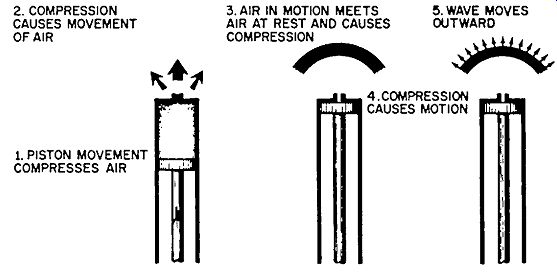
Fig. 10. The succession of events that cause a pulse of air to form a
travelling sound wave.
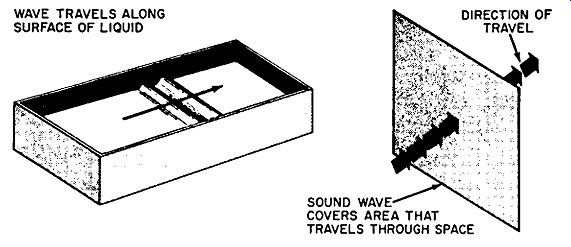
FIG 11. A wave on the surface of water b a traveling line, but a sound
wave in air is a traveling area (although the air itself does not travel).
All the kinds of sound that our ears receive and pass on to the brain as audible "intelligence" are carried through the air by means of sound waves of this kind.
This fact is the first step toward an understanding of the stereophonic nature of all sound. When we listen to someone talking in the same room, or to a musical program in a relatively small studio, we hear the sound so closely after seeing the person speak or the orchestra perform that we naturally think of sound as being instantaneous and not taking any time at all to travel. The important thing to realize here is that sound is not instantaneous, but takes time to travel however short the distance.
If sound were instantaneous then reproduction would be a much simpler problem. All we would have to do is reproduce the same sound pressures in the listening room that existed around the microphone during recording. But the fact that sound waves travel means we need to produce an identical movement of the waves as well as identical pressure variations in the waves. This seriously complicates matters, but at least we can try.
Different Kinds of Sound Source
To start with, different sources of sound radiate the original wave in different fashion. Take first of all, the piano. The source of sound is really the string, which is struck by the hammer when the key is depressed. But the string itself does not radiate much sound. In fact a piano without a soundboard is almost silent. It requires electronic reproduction to make it audible. Such pianos have been constructed, but most pianos in everyday use employ a soundboard.
The vibrating strings make the soundboard vibrate by transmitting the vibrations through a bridge over which the string passes to the soundboard. Then the whole soundboard vibrates at the same frequency as the string and sets the air in motion.
Have you ever noticed that you can hear a distinct difference between a grand piano and an upright piano? This is not just because the grand piano uses over-strung strings. There arc also over strung uprights. But these do not give quite the same sound as a grand piano. The principal reason is that the soundboard of the two types of piano is in different positions.
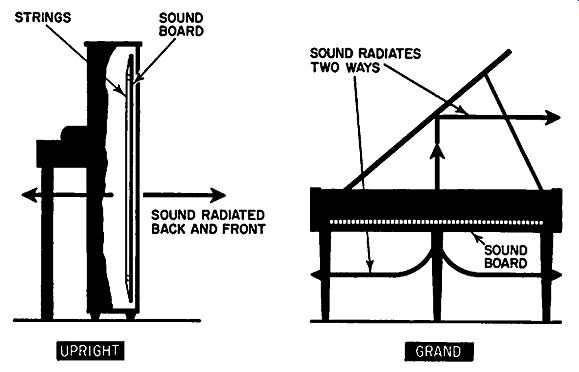
Fig 12. An experienced listener can tell the difference between an upright
and a grand piano because of the different way each radiates around.
An upright piano radiates sound from back and front, while a grand piano radiates sound from top and bottom, the sound from the upper side usually being reflected by the lid of the piano, propped at a suitable angle. This difference is illustrated in Fig. 12.
Because a trained hearing faculty can detect the subtle difference between the two kinds of wave radiated, we are able to tell the difference between the sound of a grand and an upright piano.
Another practical experiment that demonstrates the principle of sound radiation, and one you will know very well, uses the ordinary tuning fork. If you do not have an ordinary tuning fork used by musicians for tuning instruments, you can try a very similar experiment with the kind of fork used for eating.
If you twang the prongs of the fork to set them in vibration, holding the fork up in the air, very little sound is heard. But if you now place the base of the fork on a table, a clear tone becomes audible immediately (Fig. 13). You will notice that two things happen when you place the heel of the fork in contact with the table, or some other large surface: the sound becomes much louder and at the same time it drops pitch by one octave.
The vibrating prongs of the fork do produce some sound, due to alternate compression and lack of compression of the air adjacent to the prongs. But there are two compressions for every complete cycle of movement of the prongs, one when the prongs are farthest apart and one when they are nearest together. However, this vibration of the prongs transmits a frequency corresponding to once per cycle of movement into the base or heel of the fork, and this transmits a similar vibration to the table or other body to which the heel is pressed.
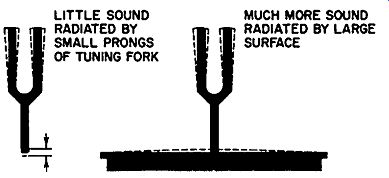
Fig. 13. A tuning fork radiates very little sound until its heel is brought
In contact with a large surface, which does the sound radiating.
This vibration is just half the frequency of the compression radiated by the prongs of the fork directly into the air, which is why we notice the drop in pitch when the heel is pressed against the table. The first radiation is a very small one due to the prongs threshing in the air without moving it much. The second one, which has a much clearer tone, as well as a louder one, is due to the rhythmic vibration transmitted to the large surface that moves a correspondingly larger volume of air.
This illustrates why stringed musical instruments need some kind of radiating surface to produce pleasant audible sound. The violin for example, transmits the vibration from the string through the bridge to the belly of the instrument. This is further carried by the sound post to the back of the instrument. Thus the body of the instrument vibrates in quite a complex fashion producing compression and rarefaction of air that is in contact with the outer surface, and also inside it, producing a radiation from the F holes of the instrument (Fig. 14). The trumpet and other wind instruments use a different method of radiating sound. Here a pipe is made to resonate a column of air. The sound wave is produced directly instead of from a vibrating element like a string. The compressibility of the air and the motion at the mouth of the trumpet are used directly to produce a resonant effect that sets the frequency radiated (Fig. 15). This enables a greater quantity of air to be moved in a smaller area, because of the fact that the air itself is moved instead of just a small vibrating object like a string or the surface of the instrument.
Still another family of musical instruments utilizes both forms of vibration in combination. A marimba or xylophone, is an ex ample of this (Fig. 16). Here the initial tone is produced by a vibrating piece of wood, struck by a hammer. This tone is not very loud by itself, but is amplified by the use of a resonant column of air, produced by a pipe hung underneath the vibrating wood.
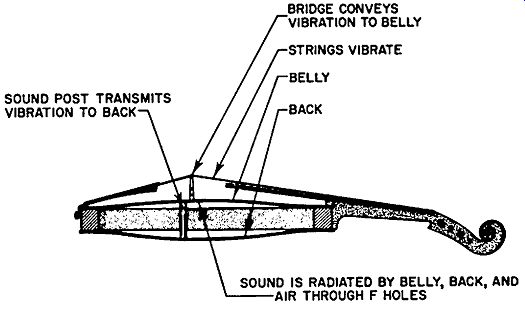
Fig. 14. A violin la a vary complicated form of sound radiator.
When the wood is first struck the column of air is not vibrating at all, but the vibration of the wood gradually sets the air in vibration at the same frequency. The natural vibration of the wood produces a threshing action in the air, very much like the prongs of a fork or tuning fork. But gradually the pipe builds up the pure tones of the true frequency started by the wood.
This accounts for the peculiar characteristic sound of the marimba, xylophone and similar instruments. The first part of the sound is quite high pitched and characteristic of a piece of wood being struck by a hammer. The later, follow-through tone of the instrument has a pure sound, due to the tone sustained by the resonant air column in the tube.
The big violin or string bass (also the cello) uses still another means of transmitting sound to be heard. This time the instrument is rather small to transmit the very large sound waves for which it is responsible.
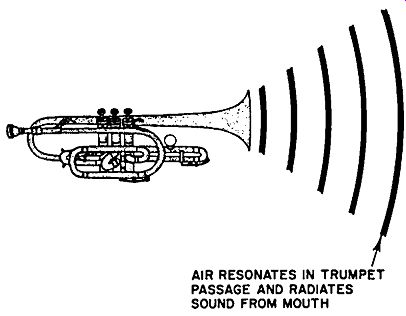
Fig. 15. A trumpet produces a direct form of sound wave radiation from
in mouth.
The lowest frequency radiated by a string bass is in the region of 41 cycles or vibrations per second. As sound waves in air travel at an approximate speed of 1086 feet per second, this means that the beginning of the first wave will be 1086 feet away by the time the end of 41st wave gets started. So each wave will be 1086/41 feet in length, or a little over 25 feet. A violin with dimensions this big would be rather awkward to play! Consequently the instrument is fitted with a peg at its bottom end, by which it rests on the floor. The vibration from the string is transmitted by the body of the instrument to this peg, which in turn transmits the very low frequency vibration to the floor where it rests. As any bass player will tell you, it makes a great difference to the sound of his instrument, whether he rests the peg on a wooden floor or a concrete floor! On the latter the instrument is practically silent, while a good wooden floor will produce the pleasing tone for which the instrument is known.
As well as radiating the sound they make in different ways, there are ways the sound grows and dies away that are characteristic of different types of instrument or the manner in which they are played (Fig. 17) .
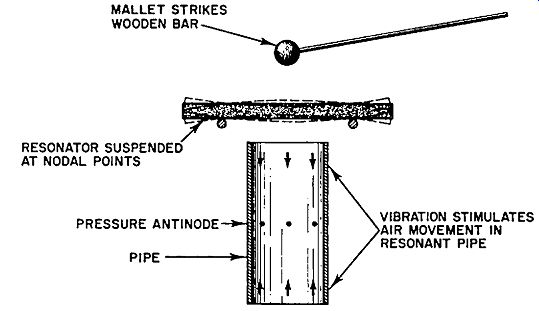
Fig. 16. A marimba or xylophone has a combined sound "generator"--a
wood resonator with an air-column resonator that "follows" it.
This has been just a brief review of how some musical instruments produce and radiate their tone. It is by no means exhaustive and there are many other kinds of sound to which we listen, such as the human voice, which is produced by means of vibrating vocal cords whose sound is further modified by the shape of the cavity we form with our months. This enables us to form the different vowel sounds, while the formation of the "release", such as teeth, tongue, lips, etc., enables us to form the consonant sounds. All this produces a very complicated pattern of sound waves which is radiated from the mouth of one person to the ear of another, and gets interpreted eventually into sentences conveying intelligence which we call speech.
Background Sound
But the making of original sound by all these different sound sources is only part of the sound experience that we pick up when listening to everyday sound. Regardless of what sounds you are listening to, you are also able to tell where you are hearing it, merely by the sound; whether it is out in the open air, in a field, in a city street, in a room, in an auditorium, or in a corridor. Each of these different places adds a characteristic to the original sound which enables you to tell where you happen to be listening.
Even in your own living room it makes a big difference to sounds you hear there, whether you have wall-to-wall carpeting and furniture in the room, or whether the room is empty, as it may be when you first move in or move out of your home.
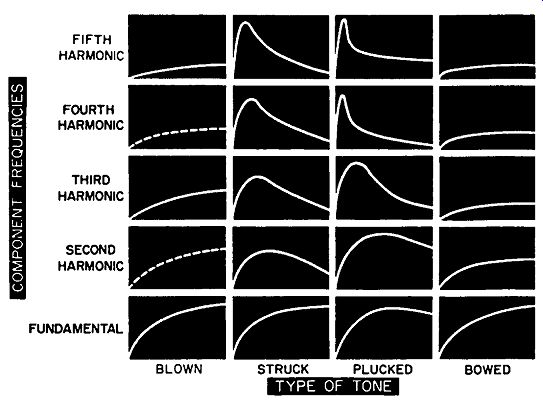
Fig. 17. Different ways an instrument is played produce different growth
patterns for the frequencies it produces.
These differences arc due to the effect known as reverberation. This rather technical word means practically the same as echo. The fact that sound travels and is reflected from surfaces with which it comes in contact produces secondary sounds to the original. An echo, however, is usually understood to mean a kind of reverberation where the reflected sound can be noticed as a separate entity.
When you hear your sentences come back to you from an echo rock it sounds as if another person is talking back to you, because the time taken for the sound to travel from you to the rock and back again enables you to be several syllables ahead of the reflected sound. But in most instances reverberation is of such a short period, the time difference between the original sound and the reverberant or echo sound is so short that you cannot hear them separately, not consciously at any rate.
However, the presence of the additional sound does make it sound different to your ear and you are aware of this difference as part of the overall sound. Actually, reverberation in most places is quite unlike the simple echo effect that you get with an echo rock. It is not just a single reflection, but a continued series of reflections. If we use the ripples on water as an illustration of how a sound wave behaves we can see what happens by vibrating the water at a certain point, representing a sound source, and watching what happens.
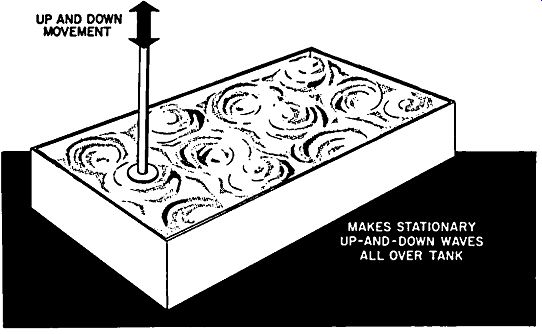
FIG. 18. Standing waves of the kind that· make up room reverberation,
can be Ulu1trated by agitating water in a tank.
First the waves travel outward from the original point of vibration. As they hit the boundaries of the tank, reflected waves are started back inwards. Eventually the whole tank is full of a mass of "standing waves"--waves that do not appear to travel, but cause the water to bob up and down (Fig. 18). The same kind of thing happens in any enclosed space, whether it is an auditorium, a room, a corridor, or a street lined with brick walls. When you start vibrating the surface of the water, or start a certain tone in such a location, the waves take time to build up to this condition after the first traveling wave starts. Then, when the sound stops, there is a vibrating system of standing waves going on that again takes time to die away.
This build up and decay of the standing wave pattern that "follows through" from the original sound, is what gives the character to the reverberation. The different shape of the room or en closed space, as well as the difference in size, adds a peculiarity to the way these standing waves build up and die down and this is what enables us to tell the difference in the kind of space where we are listening to sound.
The Importance of Transients
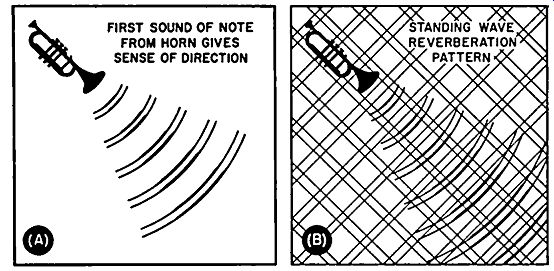
FIG 19. Our hearing faculty subconsciously differentiates between the
direct wave at the beginning of a tone (a), and the "follow-through" with
its accompanying reverberation.
Now we can see that there are two distinct parts to the complicated pattern of waves to which we listen, that enable us to interpret the sounds we hear (Fig. 19) . There is the part consisting of initial sound waves, transmitted every time a sound starts up, like the waves that radiate from the original vibration in the tank. This is the first information we have of each component of a sound we listen to.
Then, following every tone in a sound, there is a tendency to build up a standing wave of some sort, which again decays after the sound has ceased. This is more of a nondescript type of thing--a vague pattern that builds up without a definite sense of traveling as the original waves do, but which does have a definite characteristic of its own.
The interpreting faculty of the brain that listens to all the waves received by the two ears, readily separates these two effects. This is why we are easily able to listen for the characteristic tones of different instruments, like the violin, wind instruments, and so on, in an orchestra, and separate them. It is because, when we listen in this way, we tend to ignore the effect of the follow-through reverberation. We just listen for the transient tones or the original sounds that reach our ear first, and analyze the sound pattern or component frequencies and pulse sequence they generate to recognize the kind of instrument.
Here we begin to see the importance of transients in sound waves for recognition purposes, both to recognize what kind of sound we are listening to, that is the kind of instrument it comes from, or what kind of object makes the sound, and also to recognize where it comes from, the sense of location, by binaural perception.
This can be particularly noticed from observations of sound from different objects. Sounds that have sharp, distinct transients, like a clock ticking, the striking of the musical triangle, any kind of instrument that is struck, such as a xylophone, or plucked such as a banjo or guitar, or the sharp, edgy tones of a person's voice calling our name; each of these sounds give us a keen sense of direction to locate the source of sound.
On the other hand, sounds that do not have such a sharp, distinct initial transient, such as an open diapason organ pipe, or the whistle or hum referred to in the previous section, obscure the sense of direction, because a standing wave is built up by these tones before an initial transient has an opportunity to convey a sense of direction or location.
This definiteness and indefiniteness about different kinds of sound source, depending upon the degree of transient effect they produce, is also noticeable to some extent in reverberation--the characteristics of reflected sound. Some forms of reverberation, such as the echo rock or a building with a large flat wall, or even a curved wall, produce discrete reverberant components that produce a de finite echo effect. The original transient pattern of the sound wave is reproduced by the echo or reverberation coming back from the surface.
On the other hand, in a building where the wall surfaces are broken up and where there is no distinct large surface to produce a separate echo effect, they gradually build up standing waves and again gradually let them decay, taking perhaps a second for the build-up and another second for the die-away. In this case the reverberation does not have the distinct characteristic of the other type.
With the type that gives a distinct echo, the reverberation itself has a character, both as to kind of source and direction, similar to the original sound. This enables the direction of the reflecting wall surface to be detected in the same way as the direction of the original sound. But the more common sort of reverberation, which is quite indefinite in its character, builds up a kind of follow through sound which does not have this definiteness. Consequently our hearing faculty tends rather to ignore this reverberation – to reject its sound as being not part of the thing we really listen to--although we are conscious of it.
Our hearing faculty in effect separates the original transient from the sound source--the orchestra, the conversation or what ever we are listening to--from the general follow-through tones that the reverberation adds, which have no particular sense of direction but are like the standing wave patterns built up in the water tank that grow and die away as a whole rather than as a traveling wave.
To avoid possible misunderstanding or confusion, I should ex plain that the word "transient" is used here a little differently from the way an audio engineer uses it. In this guide "transient" will be used to describe an acoustic, or sound wave, where its traveling property is dearly distinguished as opposed to standing or stationary waves, where the whole area is filled with fluctuating pressures without any appreciable sense of "movement" or source.
It is to try to convey some of these differences in the character of the original sound more effectively, that stereophonic sound is introduced.
Early Progress Toward Fidelity
In the development of audio amplification from the stage where it was just a part of a radio receiver that amplified the sound frequencies after their detection, or a simple electrical amplifier for a phonograph to replace the old acoustic horns, up toward what is now known as "high fidelity", the early work consisted of endeavoring to make sure that all the frequencies making up the sound wave--from 20 cycles up to 16,000 cycles--were amplified uniformly, and that no distortion occurred that would give rise to any foreign frequencies not in the original program.
At first it was not difficult to make improvements in this direction. Then, as the distortion, both of frequency response and waveform, was reduced to lower and lower levels, it seemed we should have reached the point where deviation was no longer audible and the reproduction would sound perfect. However, the critical listening faculty of hi-fi addicts was not satisfied. The something, as I said in Section 1, that would have supplied realism, was still missing from this reproduction.
Careful listening showed it was important what kind of loud speaker you used as well as hot,, flat was its frequency response and how well it avoided any kind of distortion. Not only does the loudspeaker have to radiate all the frequencies present in the original sound at uniform and proportional intensity to the original, and without any distortion, but it must also radiate waves that have a similar radiation pattern to the original if a reasonable sense of credibility is to be achieved, that is to say, if the reproduced sound is to be believably like the original.
For example, a relatively small, single-unit loudspeaker gives quite a realistic reproduction of speech--the spoken word--because all the sound comes from a relatively small unit, not much bigger than the human mouth. But such a loudspeaker gives an ineffective presentation of an orchestra. One of the large type loudspeakers that uses a number of units to cover different sections of the frequency response, and distributes the apparent source of sound over quite a large area, gives a much more convincing reproduction of an orchestra.
Reproduction of a grand piano seems to sound most realistic from a bass-reflex speaker in which sound comes from the front of the diaphragm at one point, and also passes through the cabinet from the rear to a port, making another component of sound coming from another point. As this closely resembles the way a grand piano radiates its sound, this kind of loudspeaker is particularly realistic for this kind of sound. It tends to be somewhat less realistic for the tuba, for which purpose one of the horn-type radiators seems to give the more realistic reproduction.
This is also true for instruments like the trumpet, cornet, trombone etc., where the sound comes from a horn mouth which has the property of projecting, particularly the high frequencies, almost in a straight line from the mouth. A loudspeaker that uses a horn type tweeter gives the most realistic reproduction for these. A loudspeaker using a small-diaphragm cone unit seems to sound quite woolly when reproducing this kind of instrument, although its frequency response may measure almost identical.
The best kind of speaker to use to achieve realistic reproduction, has been found to depend, not only on the kind of program material you want to reproduce, but also on the listening room. In a fairly small living room, reproduction of an orchestra may sound quite reasonable from a fairly small loudspeaker. Putting the same loud speaker, reproducing the same orchestra, into a larger room loses the realism, because the orchestra now seems to be coming from a single point source of sound. This is where the larger type of loudspeaker is particularly necessary to get realism in orchestra reproduction.
On the other hand, the disadvantage of the larger speaker, that it spreads the vocal reproduction and makes a person's voice seem to be unnaturally scattered about, is of ten minimized in a large room, because the listener will be sitting at a considerable distance from the loudspeaker. This gives the sound from the different units an opportunity to merge together by the time it reaches the listener's ears. In a smaller room there would not be sufficient space for this to happen.
The Toneless Loudspeaker
In earlier days an ideal had been established that the reproducer system should do precisely that, i.e., reproduce, without adding any characteristics of its own. As far as frequency response and distortion' is concerned, this ideal can be approached quite closely, by minimizing the deviation in the amplification of different frequencies and reducing the amount of distortion produced, to a point where the deviation is certainly not audible. But it is definitely not possible to have the loudspeaker radiate the sound in exactly the same manner as the original sound was radiated.
Following the general idea of not adding any character of its own, the first thought about the ideal way a loudspeaker should distribute was that all the frequencies should be distributed uniformly in all directions. At low and medium frequencies this is no problem. The loudspeaker naturally distributes them this way.
The sound waves are fairly large and it doesn't take many of them (at the low frequencies only a fraction of a wave) to fill the room.
Consequently there can't be very uneven distribution of the sound at the low and middle frequencies.
But at the higher frequencies the waves are very short compared to the dimensions of the average listening room. This means that they can travel around in narrow "bunches". The result is that sound may be projected in a narrow beam from the loudspeaker so that one position will get all the high frequencies and other positions apparently don't get any--by direct radiation from the loudspeaker, that is. However, the high frequencies can still more or less fill the room by bouncing off the various wall surfaces in a form of reverberation.
This seemed like a defective situation, so a variety of loud speakers were designed with the object of uniformly distributing the high frequencies. Acoustic lenses and various other kinds of diffusers have been utilized to ensure that the higher frequencies were spread around more so that all parts of the room would receive an equal proportion. At first this sounds like a good idea, but further thought shows that it cannot give a realistic impression of the different kinds of sound source discussed earlier.
At this stage in the discussion, probably the biggest case for stereophonic sound comes from the reproduction of orchestral music. Although the large loudspeaker with a number of units does give the impression of a bigger sound source and thus is better than the single-unit type, it still lacks the spread or broadness the natural orchestra can give. The large loudspeaker gives the low frequencies at one point, the middle frequencies at another and the high frequencies from still a different position in the orchestra.
The sound from the violin covers or requires quite a range of frequencies which will be delivered, in the loudspeaker, from the middle and high-frequency units. The wind instruments likewise use a similar range of frequency. So the large loudspeaker unit virtually takes the lower frequency components of both the strings and the wind instruments and delivers them at one point, while the higher frequencies of these two groups gets delivered at another point. The distribution cannot be correct for the orchestra.
What we need is a loudspeaker system that will give us the sense of space present in an actual orchestra. This need was responsible for the idea of stereophonic reproduction. The original idea for stereophonic reproduction suggested a whole line of micro phones arranged along one wall of the studio where the orchestra or other program is performed, and to correspond with it, a similar line of loudspeakers placed all along one wall of the listening room.
Each loudspeaker relays the channel of sound picked up by the corresponding microphone (Fig. 20) . The expected result was that the exact form of the sound wave reaching the wall of microphones would be reproduced in the listening room. Experiments were conducted with this kind of system and considerable improvements were noticed. Then, to make the system economic so that people like us could buy one, experiments were conducted with less than the original number of microphones and loudspeakers. It was found that three microphones, feeding by three separate channels ultimately into three loud speakers gave an optimum degree of realism--one that was not appreciably improved by adding more channels--while using only two channels gave a realism much better than obtained with just a single microphone and loudspeaker, but noticeably below the standard achieved by the three-channel system.
So three-channel was acclaimed as "true" stereophonic reproduction. This should enable us to sit in the listening room and tell exactly where the violins, the wind instruments, and various other sections of the orchestra are located in the studio.
But just a minute. Can you really tell, by listening alone in a concert hall, exactly where the different instruments are located in the orchestra? If you have ever tried from a position more than ten rows back, I am perfectly sure that you can't. You identify where the different sections of the orchestra are located by watching them perform, rather than by sense of your ears alone.
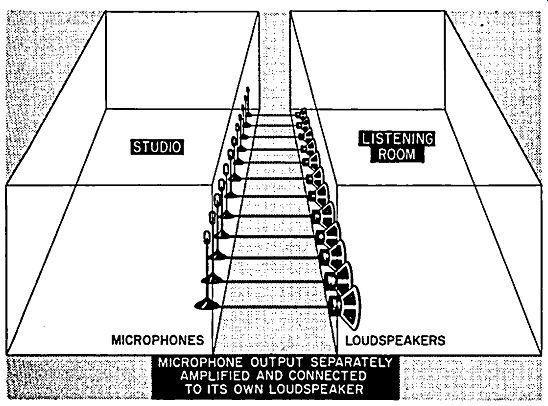
Fig. 20. The Idealized stereophonic system shown here, endeavors to "remove" the
double wall between studio and listening roam by using enough microphone
and loudspeaker.
So assuming our newly acquired stereophonic reproduction can enable you to tell exactly where the different sections of the orchestra are located, it is doing something more than listening to a live reproduction can do. In other words, it is better than live! Can this be?
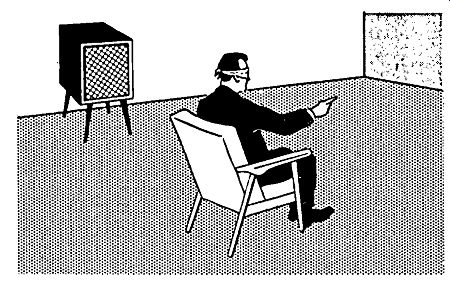
FIG 21. Experimental determination of the human ability to identify direction
of sounds at various frequencies.
Stereophonic Theory
Meanwhile, the people who "like to have a good theoretical background for everything they do" set to work to present the theory of stereophonic reproduction, just to provide a satisfactory basis for setting up this three-channel system. All the previous work on sound analysis had used the basis or hypothesis that sound waves may be analyzed into component frequencies of from 20 cycles to 16,000 cycles (or some other limit)_. The theory ran that, if you treat each of these frequencies in the spectrum correctly, then the composite will be correctly handled.
From this basis arose the discussion as to how our binaural hearing perception can locate direction. The matter was investigated at different frequencies. Tests were made, using single tones to find how accurately direction could be identified, and what properties of the wave the brain "uses" for the purpose (Figs. 21 and 22) . At some frequencies the sense of direction achieved seemed to be due to the difference between the intensity of the sound at the two ears. At other frequencies it seemed to be due to the fact that the sound arrives at the further ear a little later, and thus what is called the phase difference, or the difference in time of arrival, was responsible for the sense of direction. Let's examine what this means in terms of a few typical audible frequencies.
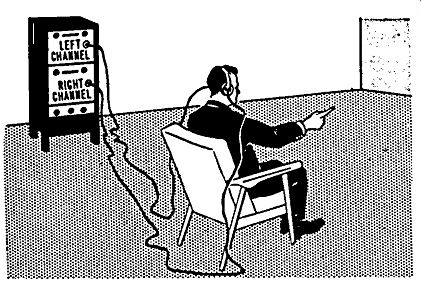
FIG. 22. Carrying the experiment of Fig. 21 a stage further, phase and
intensity differences are synth’d in the headphones to find out what properties
of the sound wave the hearing faculty uses to determine direction of source.
First take a frequency about the middle of the range, say 1000 cycles. At this frequency, the wavelength of sound is about 13" inches, because it takes 1000 waves to fill up the distance traveled in one .second, of 1086 feet. If the sound comes from directly in front of the listener, it will reach both ears at the same time and in the same intensity. If it comes from the left-hand side then it will arrive at the further ear a little more than half a wavelength, or period of vibration, later, and also the intensity will be considerably reduced because in passing the head a "hole" is made in the wavefront which has to be filled in by the wave spreading around the far side of the head (Fig. 23) . This means the intensity of this part of the wave will be considerably reduced.
So it seems logical to assume, at this frequency, that the sense of direction could be due to difference in both intensity and time.
Experiments, feeding a listener with controlled amounts of the same frequency by means of separate headphones (Fig. 22) , prove that this is true.
At an extremely low frequency, say 100 cycles, the wavelength is about 11 feet. Consequently the hole made by the head in a wave is a very small fraction and the intensity reduction due to traveling around the head is quite small. There is still a time difference due to the fact that the wave has to travel from one side to the other. The wave is 11 feet long, and the distance from one ear to the other probably only about 8 inches, so the phase difference or fraction of a wave represented here is only about 1/18 of a full period.
This gave rise to the question whether the human hearing faculty can detect such a small difference in this low-frequency wave timing. Experiments seem to suggest that to a very small degree it can, but the accuracy of detection is very much poorer than at higher frequencies.
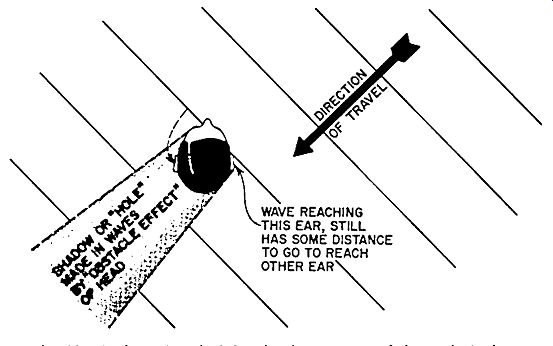
Fig. 23. In the region of 1000 cycles the arguments of the academic theory
seem fairly plausible.
Going in the other direction, using frequencies between 5000 and 10,000 cycles, the wavelength gets to be in the region of an inch or two. This means the human head knocks out quite a sizable chunk of the wave arriving at one side, and consequently the spread of the wave around the head produces much more attenuation of the wave arriving at the other side (in the hole) than it did at lower frequencies. At the same time the phase difference may be several complete periods. It may well be that compression components of the wave arrive at both ears at exactly the same time, the difference being that one ear receives it one or two complete periods ahead of the other (Fig. 24) . From this, the obvious deduction was drawn that a sense of direction at high frequencies must almost entirely be dependent upon the attenuation, or reduction in intensity, from one ear to the other.
With continuous-tone testing, experimental results confirm our deductions and the direction-sense of the hearing faculty is far inferior to everyday listening experience. The suggestion has been made that the brain utilizes composite information drawn from an "analysis" at all the frequencies present in composite sound. In fact a considerable amount of arguing has gone on about different parts of this theory.
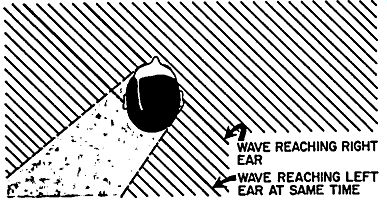
Fig. 24. At high frequencies "phase" becomes virtually meaningless,
as there will be several complete waves between the two ears.
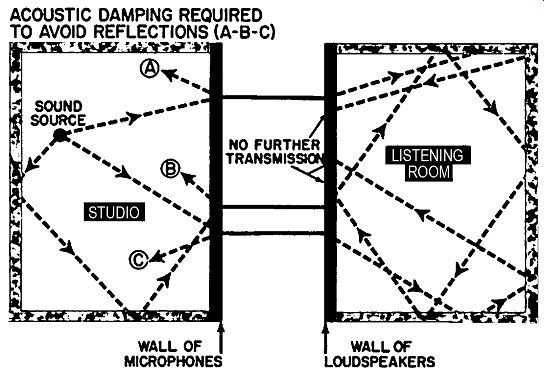
FIG. 25. A closer analysis of the "ideal" arrangement of FIG.
20 shows it cannot possibly achieve its theoretical objective, regardless
of the number of microphones and loudspeakers used.
The one fact that often seems to have been overlooked is the presence of standing waves, whenever continuous tones are reproduced or radiated in a confined space such as a listening room.
Tests can be (and have been) conducted in an "anechoic chamber" (a room where all the walls are so heavily padded that practically no reflection occurs at all). Under these conditions it is possible to obtain some verification of the theory just discussed.
But who listens in an anechoic chamber? If you have ever been in one, you will have quickly realized that it would be a most unpleasant place in which to listen to high-fidelity music. The complete absorption by all the walls gives the room an extremely dead or silent effect and reproduction in such a room seems entirely unrealistic. So for things to be at all natural, we must have the reproduction in a listening room with a certain amount of natural reverberation or reflection from the wall surfaces.
As soon as we do this, any test with continuous tones like that just described will produce standing waves, especially at frequencies above 100 or 200 cycles where there is room for at least three or four waves in the room at once. This means a pattern of standing waves will be set up, according to the size of the room. The waves will not be traveling around the room (according to the theory) , but will be just like the standing waves in the water tank where the different points on the water merely bob up and down instead of the waves traveling. Correspondingly the air pressure at different points in the room will be fluctuating without any apparent traveling wave effect.
It is possible to get some kind of directional sense from a standing wave, but only if you hold your head very still. As soon as you move your head, the relative intensity and phase at the two ears rapidly changes, consequently the apparent direction will seem to change very rapidly too.
So this method of making tests really tries to determine how we sense the direction of reverberation --a kind of sound in which we don't as a rule bother much about direction. The part we are really interested in is the direct sound, where the waves actually do appear to travel, and this is concentrated in the transients of the reproduced program.
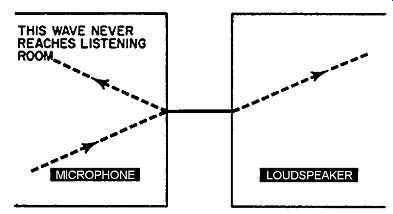
FIG 26. Alternate to the use of non-reflecting wall, behind the microphone
(fig. 25) and loudspeaker, reflecting walls can be used, but result is
no nearer the theoretical ideal.
How does this affect the realism achieved by the theoretical stereophonic system we discussed a little earlier--the three micro phones feeding the three loudspeakers? The basic theory suggested that connecting each microphone with its corresponding loud speaker, was equivalent to taking away the wall between the two rooms. The fact that the two rooms might be separated by a considerable distance, by radio transmission or time, making a re cording and reproducing it, does not materially affect the situation.
All the sound waves arriving at the wall occupied by microphones are accurately reproduced at the wall occupied by loudspeakers, by reproducing the sound pressures at the different points along it.
But notice that this theory assumes (although it was never so stated) that the sound waves travel only from the studio into the listening room, and that none of them go back (Fig. 25) . To achieve this idealized condition then, the walls where the microphones are should be acoustically damped to prevent any reflection, and so should the wall where the loudspeakers are.
Then reflected waves from the other three walls of the studio will also reach the microphones and be recorded or transmitted and given out, along with the original waves, at the loudspeakers. At this point the partial reverberation from the studio will be continued in the listening room and completed by reflection from the remaining three walls of the listening room.
This is one idealized possibility. But notice that this possibility assumes that the reverberation, as well as the original sound, can travel only one way through the intervening wall. It can reflect around the three walls of the studio, but once it passes through the fourth wall, it has no means of coming back. In any natural auditorium, studio, or listening room, it is possible for the sound to reflect from all the walls.
Maybe you should make the fourth wall of the studio, and also that of the listening room, reflecting. But this again doesn't fill the bill exactly, because now the wave reflected from the fourth wall of the studio doesn't get into the listening room at all (Fig. 26) . To be more realistic the wave reflected from the fourth wall of the studio should be reproduced at the opposite wall of the listening room.
All this has been discussed, not to show that stereophonic re production is impossible, but that it does not achieve the proposed ideal, presented in the theory. The use of a stereophonic system does considerably improve the sense of realism given by the reproduction. But at this point I want to make quite clear the fact that such a system cannot accurately reproduce the original performance in the living room, whatever is done with it. It is always a compromise--and a much bigger compromise than is of ten stated in literature on the subject. The fact that two or three channels are used to record more information about the original program naturally means that we have a better chance of achieving a sense of realism in the reproduced sound.
But before we go on to consider a little more detail about stereophonic systems actually used, let's evaluate how important are the various facts we have discussed in this section.
The Big Help
First we showed how the part we are most interested in is the direct sound. The reverberant sound is necessary to get a sense of realism, but we do not pay such close attention to it. We do not analyze where the reverberation actually takes place to the extent that we pay attention to individual sounds coming from the original program. Our ears even have a natural tendency to ignore the reverberation although we are conscious it is there.
This fact is really the salvation of stereophonic sound, and in deed of any system of reproduction. Provided the reproducer system makes a good attempt at reproducing the sound transient waves, those coming from the original program source--the orchestra, instrumentalist, person speaking, or whatever it is--and provided the combined reverberation due to sound in the original recording studio, together with that added by reverberation from the reproduced sound, gives a realistic overall effect, we shall be reasonably happy that the reproduction sounds real.
The experimental results we discussed, while appearing to con firm, to an extent, the theory on which the experiments were con ducted, only do so for a somewhat different reason. The most prominent sense of direction we can notice is not due to any sustained tones at all, but is due to transient sounds. Even the sound of an aircraft is a complex sound--a repetition of pulse-type sounds from the motors--containing a random mixture of the higher frequencies.
It is true the ear can give only a less critical sense of direction to the lower frequency tones. But this is not so much because of the long wavelengths involved, as the fact that, being a low frequency means they cannot happen relatively suddenly. Low frequency tones, by their very nature, have to take a considerable time to build up, and the time they take to build up is very much longer than the time taken for the sound to travel from one ear to the other.
However, a particular example will well illustrate the principles we have discussed. Fog signals used at sea invariably consist of some kind of horn that is mechanically blown to produce quite a low-frequency tone. The reason for using a low frequency is that it carries over a greater distance without absorption by the fog.
Higher frequencies are more liable to attenuation with distance and might thus be obscured more quickly. But in the open space at sea, direction can very easily be recognized by listening to these pulses of quite low frequency.
Certainly the accuracy in sense of direction achieved under these conditions, is much closer than would be expected on the basis of the theory and experiments discussed earlier. This is because although the phase difference, measuring along the low frequency waves, is only a very small fraction, there is still a time difference in the arrival of the start of the wave, that the ear can utilize.
The nerve fiber carrying information to the brain about this low frequency uses pulses just as sharp as those for high frequencies along other nerve fibers. So the brain can just as critically measure the time difference between these pulses, whether the frequency is low or high.
But on a continuous tone the brain loses the ability of measuring time difference between ears, because each ear transmits a continuous sequence of pulses not related in any way to the phase of the audio wave, but to its intensity at that ear. Thus our deduction that the sense of direction is based primarily on transients proves to be correct for low frequencies as well as higher ones (Fig. 27). In reproduction for high fidelity in a livingroom, conditions are very different from those at sea. We are now enclosed in a limited space and the waves no longer travel freely past our ears because the room in which we listen can only contain, at the most, one or two waves at this frequency. A standing wave is built up immediately the frequency starts. So a foghorn reproduced over a loud speaker in a livingroom will not give its listeners the same accurate sense of direction as the real foghorn. Possibly, if the sound is accompanied by some of the rushing of air through the horn, this hissing sound will give a sense of direction in the livingroom. But this is not the same component that helps the sailor to determine the direction when at sea.
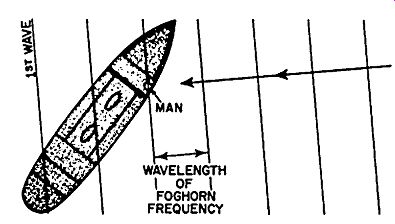
Fig. 27. Low frequency, such as used by a foghorn at sea, can give very
satisfactory directional identification, but they must be used in large,
if not open, spaces.
The fact that the ear achieves a better sense of direction at the higher frequencies is because these are the frequencies of which transient sounds are more prominently constructed. The tick of a clock, or the "ting" of a xylophone being struck, is rich in the high-frequency harmonics for a very short duration of time, and this makes the radiated sound extremely easy to locate.
Undoubtedly the intensity difference noted in the experiment is a contributing factor, but still more important is the time difference. This is proved by the fact that--a person slightly deaf in one ear--so that normal intensity and time differences no longer apply when the impulses reach the brain--can still have a sense of direction in his hearing, not so very much inferior to that of a per son with two equally good ears. The hearing faculty can make an adjustment for a permanent intensity difference and leave the brain still with the ability to determine direction on the basis of the time difference observed.
A person with one ear better than the other will probably notice he has difficulty in locating soft sounds whereas louder sounds are much easier to sense. This is because his stronger ear is stimulated much more intensely by the soft sounds, whereas his weak ear may not be hearing them appreciably, if at all. As soon as the sounds are stronger, the correction factor applied by the brain for intensity difference can do a much more efficient job, and the time comparison mechanism can more accurately determine the direction from which the sound comes.
Now we have some understanding of both sound and the hearing faculty, so we can discuss the systems available for use either in the home or in theaters, with a much better knowledge of what to expect them to do for us, and also with a better means of judging the prospect of each system in this regard. In these two sections we have not discussed all the problems that will be encountered in making a stereophonic system--only those that are basic to our hearing faculty and the reproduction of sound in a room. Other problems relating to the systems themselves we shall discuss as they arise when we come to them.
The discussion in these sections has shown that the "classic" theory presented to support either the binaural reproduction, using headphones, or the so-called stereophonic reproduction, using microphones with wider and identical spacing, does not fully explain the problems. Nor is either system able, even in theory, to achieve perfection of its objective when more closely examined. It is apparent that the important thing is the production of a satisfactory illusion of realism, though to do this we may have to use what some idealists have facetiously dubbed a "bistereonauralphonic" system, something which is a bit of each, or even nothing at all, according to "classic" theory.
As we progress, we shall analyze the problems encountered on the basis of the best prospect for producing the desired illusion, considering what is necessary for this purpose, rather than trying to get the nearest approach to some purely theoretical ideal, such as identical microphone/loudspeaker placement.
(Adapted from: Stereophonic Sound (1957) by Norman H. Crowhurst)
= = = =